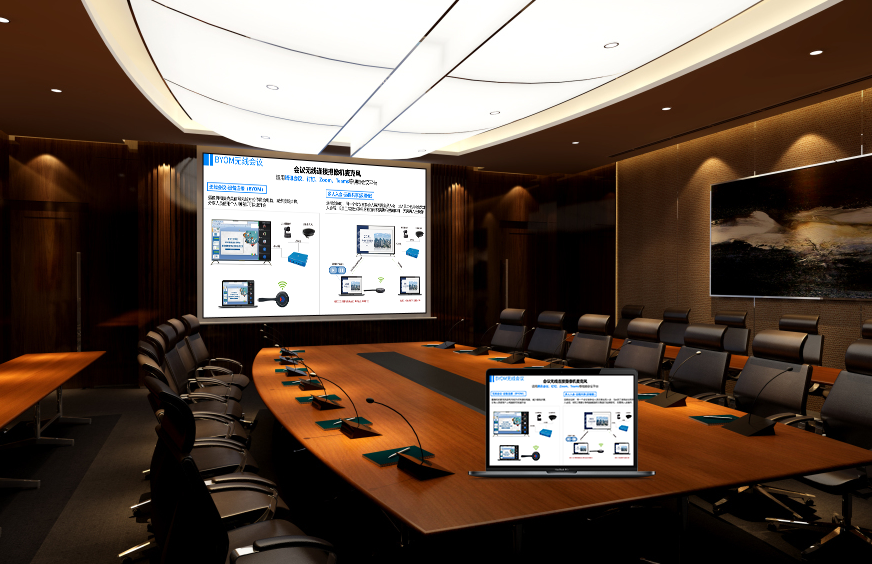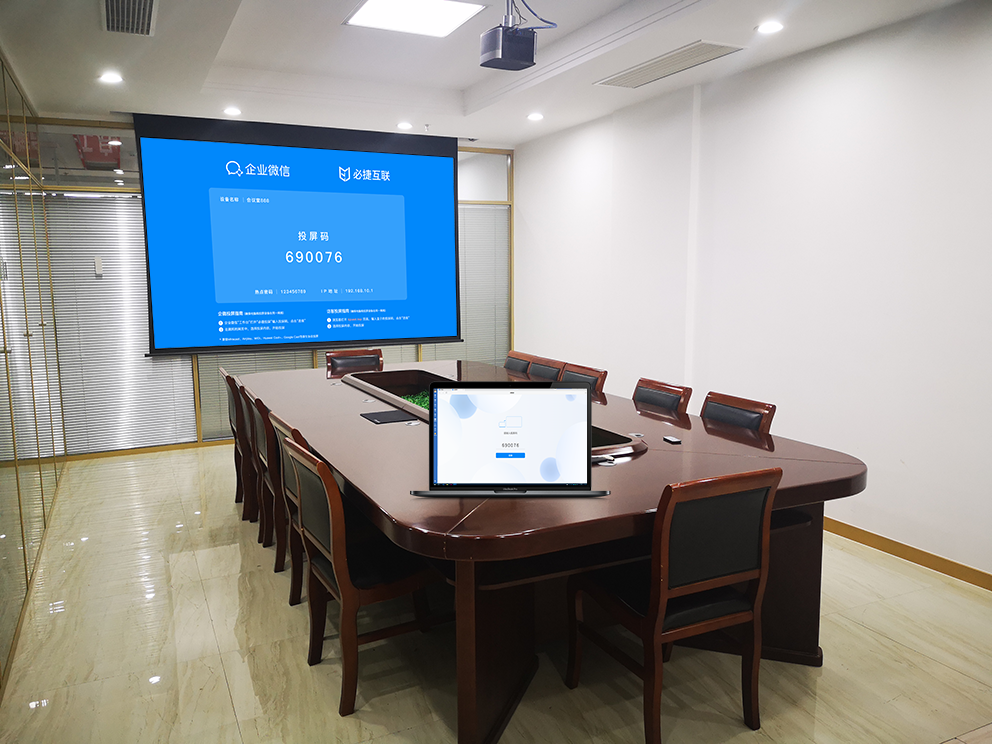Wireless Meetings: A Detailed Analysis of the New Experience in Efficient Collaboration
In today’s era of accelerating digital office adoption, wireless meetings have emerged as a core solution to break down the barriers of traditional meetings. Below, we dissect how they redefine meeting efficiency through their core functionalities:
I. Full Wireless Connectivity: Start Meetings in 3 Seconds
- Zero cable constraints: Participants no longer need to plug in HDMI or VGA cables. Phones, computers, and tablets can quickly connect to the conference room’s large screen via QR code scanning, casting codes, or NFC touch, reducing pre-meeting preparation time to under 1 minute.
- Cross-scenario adaptability: Supports multiple network modes such as WiFi Direct and 5G private networks. Even if the conference room WiFi is unstable, a hotspot mode ensures smooth screen casting, preventing meeting interruptions due to network issues.
II. Full Device Compatibility: Eliminate System and Brand Barriers
- Seamless cross-system integration: Compatible with Windows, macOS, Android, iOS, and HarmonyOS. Laptops, phones, and tablets connect instantly without installing drivers.
- Multi-protocol support: Integrates 6 major casting protocols including AirPlay, Miracast, Huawei Cast+, and Google Cast. Apple users can mirror screens, Android users can wirelessly cast, and PC users can push documents—all effortlessly.

III. High Definition & Low Latency: Restore Realistic Communication
- 4K+60fps ultra-high-definition transmission: Details in PPT animations, engineering drawings, and video materials are displayed clearly with over 95% color accuracy, far surpassing the blurry quality of traditional projectors.
- 100ms low latency: Equipped with self-developed anti-interference algorithms, it ensures smooth 画面,strict audio-visual synchronization even with multiple simultaneous casts. “Choppy speech” and “delayed actions” in remote meetings are a thing of the past.
IV. Interactive Collaboration: Beyond “One-Way Presentation”
- Real-time annotation and reverse control: Participants can directly mark key content on the large screen. Speakers can reverse-control the casting device via the screen to flip pages or adjust focus, eliminating frequent device switching.
- Multi-screen split display for comparison: Supports up to 4 devices casting simultaneously. The main screen can split to show different plans, facilitating side-by-side analysis—ideal for plan reviews and data discussions.
- Anonymous comment interaction: Remote participants can send text comments via their phones, which scroll in real time at the bottom of the large screen, avoiding the awkwardness of “hesitating to speak” in in-person meetings.

V. Secure and Controllable: Protect Sensitive Meeting Information
- Hierarchical permission management: Administrators can set modes such as “host-only casting” or “password-verified casting” to prevent unauthorized device access.
- Transmission encryption + local destruction: Uses bank-level AES-256 encryption. After meetings, casting caches are automatically deleted, ensuring sensitive documents and confidential data leave no traces.
- Operational log tracking: All records of casting, annotations, and device access are traceable, meeting enterprise compliance and audit requirements.
The value of wireless meetings lies in using technology to simplify processes and remove obstacles, allowing participants to focus on “discussion content” rather than “device operations.” Whether it’s a 5-person team huddle or a 50-person cross-regional meeting, wireless meetings enhance efficiency by over 30% through seamless connectivity, smooth interaction, and robust security—making them an indispensable collaboration tool in modern workplaces.
